Mario Quiles Pérez
Decentralized Federated Learning: Fundamentals, State-of-the-art, Frameworks, Trends, and Challenges
Nov 15, 2022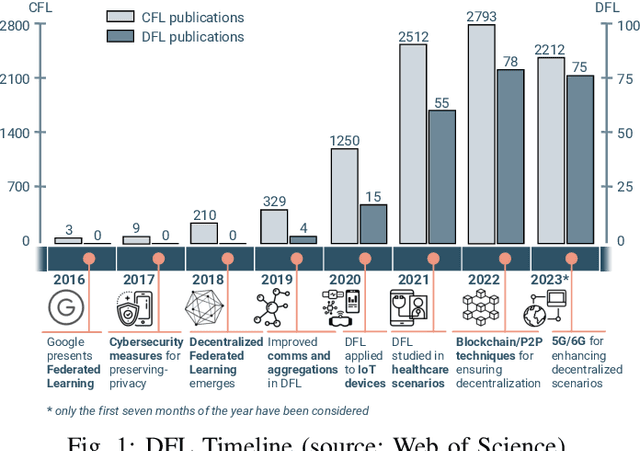
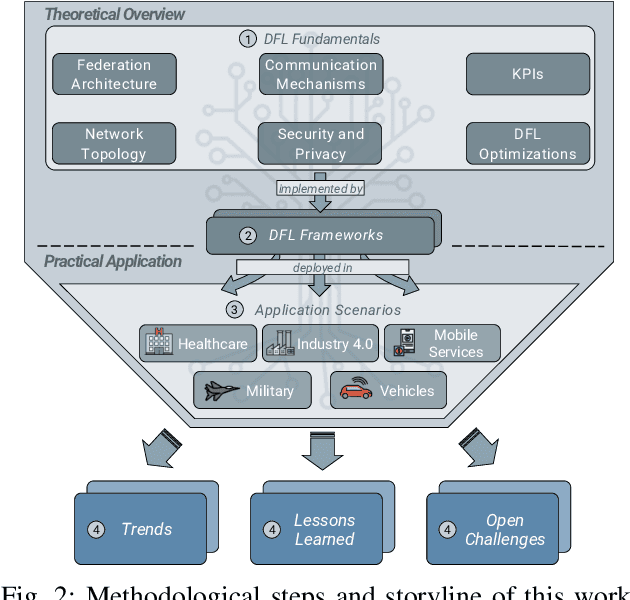
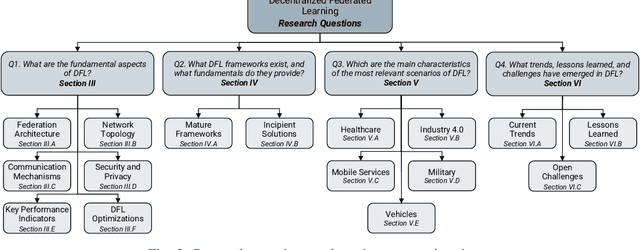

Abstract:In the last decade, Federated Learning (FL) has gained relevance in training collaborative models without sharing sensitive data. Since its birth, Centralized FL (CFL) has been the most common approach in the literature, where a unique entity creates global models. However, using a centralized approach has the disadvantages of bottleneck at the server node, single point of failure, and trust needs. Decentralized Federated Learning (DFL) arose to solve these aspects by embracing the principles of data sharing minimization and decentralized model aggregation without relying on centralized architectures. However, despite the work done in DFL, the literature has not (i) studied the main fundamentals differentiating DFL and CFL; (ii) reviewed application scenarios and solutions using DFL; and (iii) analyzed DFL frameworks to create and evaluate new solutions. To this end, this article identifies and analyzes the main fundamentals of DFL in terms of federation architectures, topologies, communication mechanisms, security approaches, and key performance indicators. Additionally, the paper at hand explores existing mechanisms to optimize critical DFL fundamentals. Then, this work analyzes and compares the most used DFL application scenarios and solutions according to the fundamentals previously defined. After that, the most relevant features of the current DFL frameworks are reviewed and compared. Finally, the evolution of existing DFL solutions is analyzed to provide a list of trends, lessons learned, and open challenges.
Studying Drowsiness Detection Performance while Driving through Scalable Machine Learning Models using Electroencephalography
Sep 08, 2022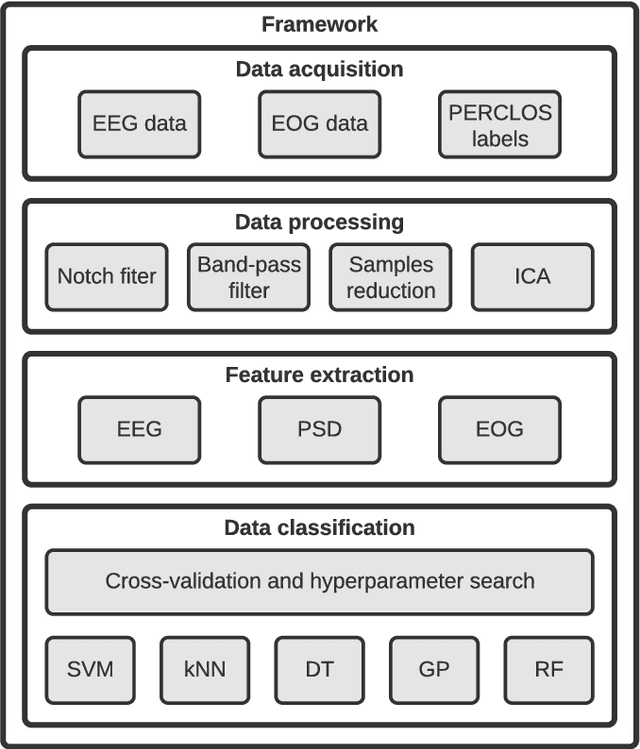
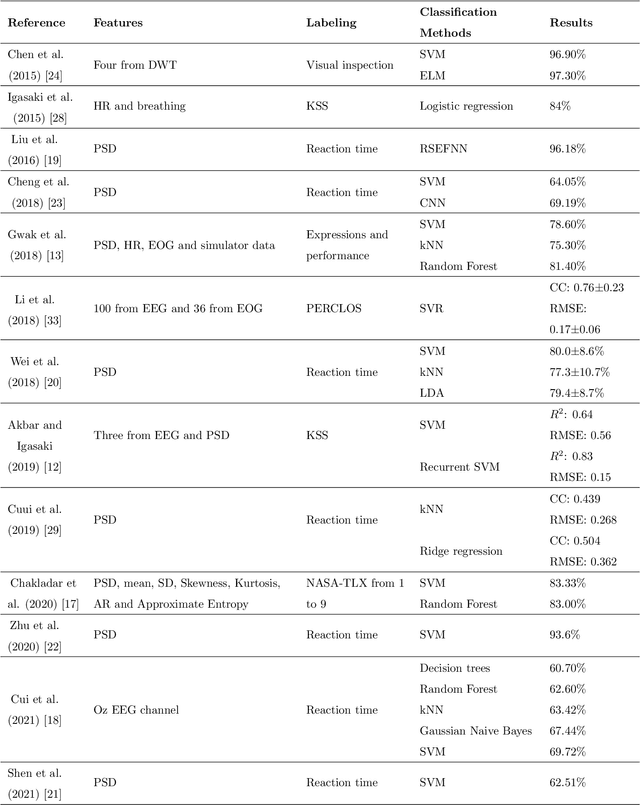
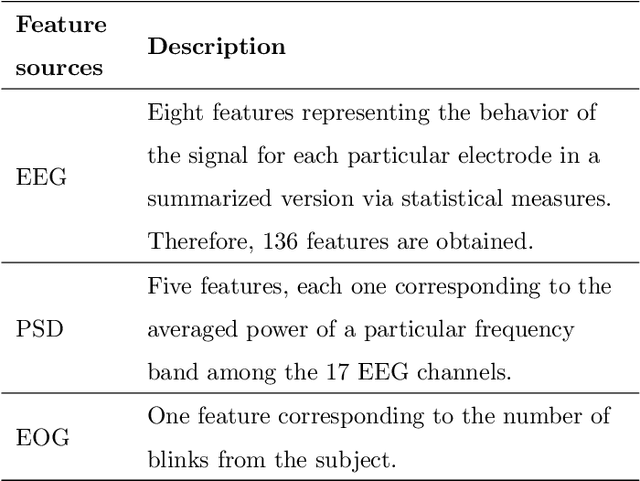
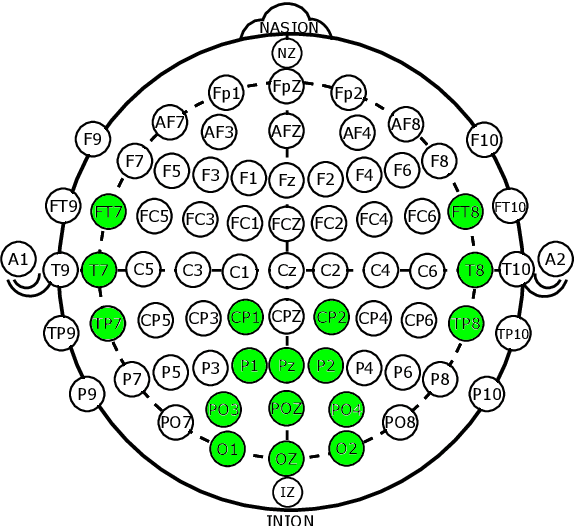
Abstract:Drowsiness is a major concern for drivers and one of the leading causes of traffic accidents. Advances in Cognitive Neuroscience and Computer Science have enabled the detection of drivers' drowsiness by using Brain-Computer Interfaces (BCIs) and Machine Learning (ML). Nevertheless, several challenges remain open and should be faced. First, a comprehensive enough evaluation of drowsiness detection performance using a heterogeneous set of ML algorithms is missing in the literature. Last, it is needed to study the detection performance of scalable ML models suitable for groups of subjects and compare it with the individual models proposed in the literature. To improve these limitations, this work presents an intelligent framework that employs BCIs and features based on electroencephalography (EEG) for detecting drowsiness in driving scenarios. The SEED-VIG dataset is used to feed different ML regressors and three-class classifiers and then evaluate, analyze, and compare the best-performing models for individual subjects and groups of them. More in detail, regarding individual models, Random Forest (RF) obtained a 78% f1-score, improving the 58% obtained by models used in the literature such as Support Vector Machine (SVM). Concerning scalable models, RF reached a 79% f1-score, demonstrating the effectiveness of these approaches. The lessons learned can be summarized as follows: i) not only SVM but also other models not sufficiently explored in the literature are relevant for drowsiness detection, and ii) scalable approaches suitable for groups of subjects are effective to detect drowsiness, even when new subjects that are not included in the models training are evaluated.
 Add to Chrome
Add to Chrome Add to Firefox
Add to Firefox Add to Edge
Add to Edge